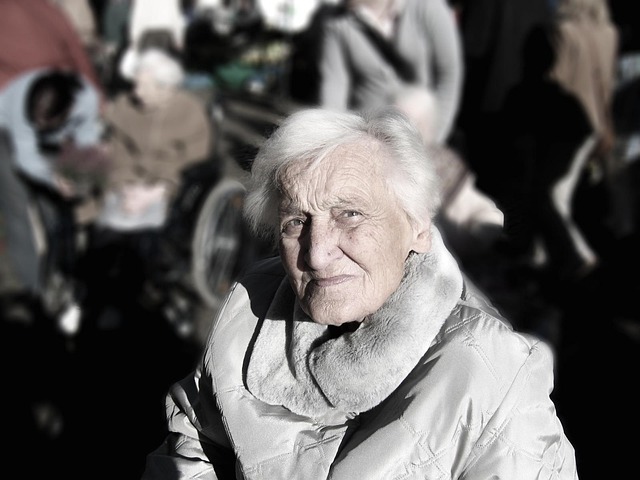Evaluating home safety hazards and implementing aging in place solutions are crucial for supporting aging family members. Caregivers should conduct thorough assessments, addressing physical risks like slip-and-fall hazards and ensuring accessibility. Emotional support through open communication and family resources is vital to combat loneliness and depression. Exploring elder financial assistance options can alleviate stress while senior caregiving resources offer tailored solutions. By combining practical modifications with emotional well-being strategies, caregivers can create a safe, supportive home environment for seniors, managing their needs comfortably and securely.
Ensuring safety and comfort in home environments for seniors is paramount as they age. This comprehensive guide offers valuable elder caregiving tips and senior care resources to create a secure and supportive living space. We explore how to identify and mitigate home safety hazards for seniors through thorough assessments, prioritizing areas of concern based on risk level. Discover aging in place solutions that promote accessibility and mobility, incorporating design principles tailored to their needs. Additionally, we delve into emotional and financial support systems, including elder financial assistance and emotional support for elderly family members, along with fostering a supportive network for seniors.
Evaluating Home Safety Hazards for Seniors
Evaluating home safety hazards is a crucial aspect of supporting aging family members and ensuring they age in place comfortably and securely. As parents age, their needs change, and managing these new requirements can be challenging for caregivers. Elder caregiving resources offer valuable guidance on identifying potential risks within the home environment. From slip-and-fall hazards to accessibility issues, every detail matters. Caregivers should assess the living space thoroughly, considering the unique needs of the senior. This process involves checking for secure handrails in bathrooms and kitchens, ensuring clear pathways for mobility aids, and even evaluating lighting conditions to prevent accidents caused by poor visibility.
Family support for seniors is essential during this evaluation process. Encouraging open communication allows elders to share their concerns and preferences honestly. By understanding their emotional needs, caregivers can create a safe haven that promotes independence while providing the necessary assistance. Moreover, exploring elder financial assistance options can alleviate some stressors, ensuring seniors have access to the resources they need for a secure home environment. Aging in place solutions are abundant, catering to various physical and emotional support requirements.
– Identifying common risks in the home environment
Many common risks exist within home environments that can pose significant challenges for seniors, necessitating family support for aging members and exploring elder caregiving resources. As individuals age, their physical abilities and mental acuity may decline, leading to increased vulnerability. Identifying potential hazards is a crucial first step in ensuring safety and promoting comfortable aging in place solutions.
Managing the needs of aging parents requires a holistic approach. This includes assessing risks like slippery floors that could cause falls, cluttered spaces impeding mobility, or even simple issues like poorly lit areas affecting visual perception. Additionally, addressing emotional support for elderly individuals is vital; loneliness and depression are prevalent among seniors, so providing companionship and engaging in regular conversations can significantly contribute to their well-being. Elder financial assistance and caregiving resources should also be considered to alleviate the burden on family members, enabling them to offer better support.
– Conducting a thorough safety assessment
Creating a safe and comfortable home environment for aging family members is a crucial aspect of supporting them as they age gracefully. A thorough safety assessment is the first step in this process. This involves meticulously evaluating every corner of the home, identifying potential hazards, and addressing them proactively. From tripping hazards like loose rugs to accessibility issues in bathrooms, no detail should be overlooked. Elder caregiving resources provide valuable guidance on conducting these assessments and offer solutions tailored for managing aging parents’ needs, such as installing handrails or improving lighting.
Family support for seniors goes beyond physical safety; it encompasses emotional well-being too. The assessment process can also uncover emotional triggers or loneliness, prompting the provision of elder financial assistance or engaging activities to promote social interaction. Aging in place solutions focus on making homes suitable and comfortable for seniors over time, enhancing their independence while ensuring they receive the care they need. This holistic approach ensures that not only are physical risks mitigated but also that seniors feel supported throughout their aging journey.
– Prioritizing areas for improvement based on risk level
When prioritizing improvements for a senior’s home environment, it’s crucial to assess risks based on their individual needs and daily routines. Start by identifying high-risk areas such as slippery floors, narrow passages, or lack of handrails in bathrooms. These areas pose significant fall hazards and should be addressed first. Implement solutions like adding non-slip mats, installing safety bars, or rearranging furniture to create wider pathways.
Next, focus on essential amenities and support systems. Ensure adequate lighting in all rooms to prevent tripping and aid in visual acuity. Consider installing smart home devices for easy access to emergency services and family members. Additionally, providing comfortable seating areas and ensuring easy access to food, water, and medications are vital. Emotional support should also be prioritized; regular visits from family or dedicated caregiving resources can significantly enhance the senior’s well-being.
Creating a safe and comfortable home environment is essential for supporting aging family members and ensuring their well-being. By identifying common risks, conducting thorough safety assessments, and prioritizing areas for improvement, caregivers can provide valuable elder care tips and resources to manage their parents’ needs effectively. Family support for seniors is crucial, and implementing aging in place solutions not only enhances their quality of life but also offers emotional support for the elderly. With the right approach, we can enable our loved ones to age with dignity and security.
